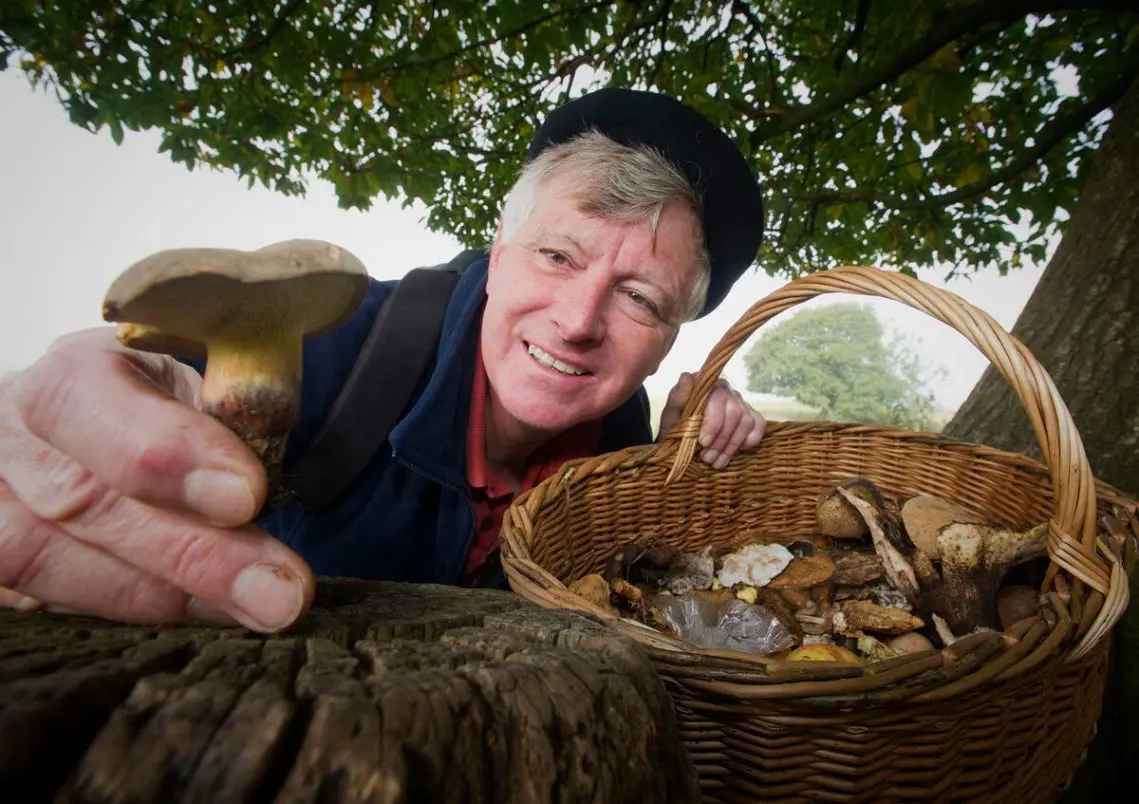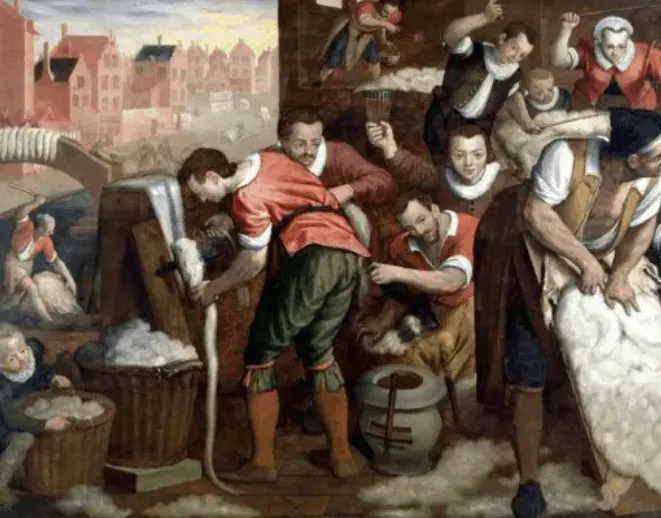These types of baskets tend to be oval or round based with a central bow handle.
They tend to have a slath base and vary in the type of weave for the sides, some plain and other decorative like the example shown by Wild Wicker.
Foraging baskets are also made using frame techniques.
They are designed to be easy to carry and hold a manageable weight of produce for one person to carry.

This is a photo of my old manager at Shropshire Wildlife Trust, John Hughes.
He's a mushroom expert and had a basket specially designed to have a large base but be shallow,
so that he could pick lots of mushrooms but they wouldn't pile up on each other and get squashed.
Basket made by Kelvin a basket maker but I can't remember his last name!

Not much came up online when looking for inpiration down the wool route.
This old painting from the Netherlands shows several baskets that look much like modern log baskets using stake and strand techniques.
Isaac Claesz. van Swanenburg, Het ploten en kammen, painting, 1594-96
Cran (Gaelic for herring measure) baskets had lots more information online and were an interesting basket to research.
Results from the rabbit hole can be read - here.
When I worked for Shropshire Wildlife Trust, I did a project working on Whixall Moss, which was an active peat cutting site until the 1990s.
Peat carrying baskets seem to have a strap around the forehead or shoulders more than a handle. They are also fast made, quite rough, homemade baskets looking at the photos.
Scottish Island versions are also sometimes made of heather due to a lack of willow or other suitable trees to use to weave from.
A Scottish crofter's peat basket Victorian period credit Mary Evans Picture Library Photo Prints and Wall Art
I love Moses baskets and the examples online range from quite ornate weaves to ones that are beautiful in their simplicity like this one by John Waller Underwoodsman.
They are essentially large baskets with a handle either side using traditional side weaves like this slew on an oval base with randing at top and bottom.
They are named after the Exodus bible story of Moses being pushed down the river in his crib. They are widespread around the world and made from whatever local materials are to hand.
The shape of these baskets is dictated by it's function i.e. it needs to be able to hold a baby and be carried.
I came across this Bonnie Gale basket on the Stowe Basket Festival (USA) website where she is doing a class to make them.
A reverse Google image search suggests that these may also have been called My Lady's baskets and were decorative pieces carried by gentlewomen when strolling in grounds or to keep their needle work in.
After finding the Austrian Delight basket, this then threw up some other results for decorative market baskets from France, Germany and UK.
However, the searches also brought me back to this little basket from Acton Scott.
Results from the rabbit hole can be read - here.